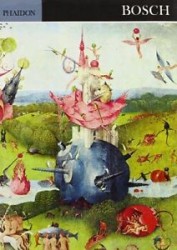
Rowlands 1975
Bosch (John Rowlands) 1975
[Phaidon, London, 1975, 64 pages]
[German translation: John Rowlands, Bosch, Pawlak Verlag, Herrsching/Ammersee, 1975, 14 pages + 48 illustrations]
[Also mentioned in Gibson 1983: 12 (A57)]
Rowlands stresses that Bosch is mainly a moralist, situating this fact in the cultural context of the late-medieval Netherlands: under the influence of the Modern Devotion quite a number of lay fraternities were founded and they were the center of the religious life. Bosch was a member of such a fraternity. The general outlines of Bosch’s message can be understood in that light: he is a kind of preacher, on the one hand warning of Evil and of the approaching Catastrophe, and on the other hand inciting to meditation about life by depicting the sufferings of Christ and of a number of saints.
Rowlands is very careful when interpreting Bosch’s paintings. He is in favour of Mehrdeutigkeit (poly-interpretability) and believes that in many cases there are no one-dimensional solutions. He rejects Fraenger’s theories, but in some instances he does not shy away from astrological and alchemical interpretations. The Rotterdam Pedlar, the closed wings of the Madrid Haywain and the Paris Ship of Fools can be interpreted in an astrological way and the Madrid Garden of Delights shows traces of alchemy. Regarding the central panel of this latter triptych he calls Gombrich’s theory utterly convincing. According to Rowlands Bosch is a doom-monger living in uncertain times. That is why we are appealed by him. For us his Hell has become the Totalkrieg.
Every now and then Rowland’s descriptions of the paintings are erroneous. When describing the closed wings of the Haywain for example he writes that a man is being persecuted by a woman (whereas actually they are dancing to the tunes of a piper) and at the top of the tree on the Ship of Fools he sees a symbolical skull (whereas it is the head of an owl).
[explicit]